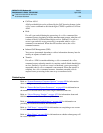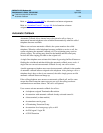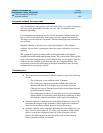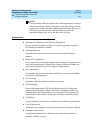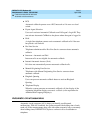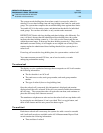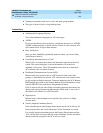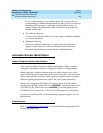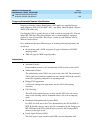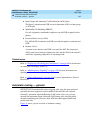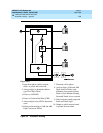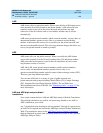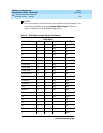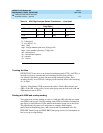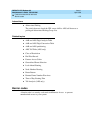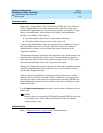
DEFINITY ECS Release 8.2
Administrator’s Guide
555-233-506
Issue 1
April 2000
Features and technical reference
1166Automatic Number Identification
20
Outgoing Automatic Number Identification
Outgoing automatic number identification (ANI) applies to outgoing Russian
multi-frequency (MF) ANI, R2-MFC ANI , and Spain Multi Frequency Espana
(MFE) ANI trunks only.
Use Outgoing ANI to specify the type of ANI to send on outgoing calls. You can
define MF ANI (the calling party number, sent via multifrequency signaling)
prefixes by class of restriction. This allows a switch to send different ANIs to
different central offices.
For a tandem call that uses different types of incoming and outgoing trunks, the
switch uses:
■ the incoming trunk’s COR -assigned call type for Russian or R2-MFC
outgoing trunks
■ ARS call types for MFE outgoing trunks
Interactions
■ Attendant Console
If an attendant extends a call, the attendant’s COR is used to select ANI.
■ Authorization Codes
The authorization code COR is not used to select the ANI. The extension’s
ANI is used if an extension originates the call, and the ANI for the switch is
used if the originating endpoint is an incoming trunk.
■ Bridged Call Appearance
A call from a bridged call appearance uses the ANI of the primary
extension.
■ Call Vectoring
The ANI of the originating party is used, not the ANI of the call vector,
when a call vectoring route-to command routes a call over an outgoing
trunk.
■ Distributed Communications System (DCS)
In a DCS, the ANI sent to the CO is determined by the ANI for PBX on
PBX_B, but the category sent to the CO is determined by the Category for
MF ANI field on the Class of Restriction screen for the incoming DCS
trunk or by the type of call.
■ Expert Agent Selection (EAS)
The EAS agent’s login extension and COR is used to determine ANI.



